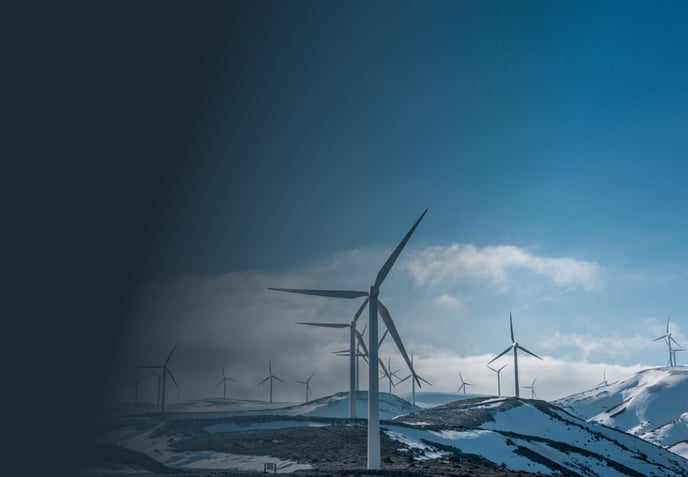Wind turbines are exposed to the elements and the persistent onslaught of mother nature 24/7, 365 days a year. A range of studies over the years links climatic conditions to internal and external wind turbine failure, both in direct-drive and geared-drive wind turbines to varying degrees. Cotes can't keep your wind turbine dry on the outside, but on the inside, where there are loads of critical electrical systems and mechanical components to keep dry, Cotes can dry the air, filter salt from the air, and create an overpressure to keep moist air out and dry air in. Cotes dry air solutions can easily be retrofitted inside WTGs onshore, nearshore and offshore. It is never too late to take control of humidity.
Causes:
- External: the most common external wind turbine failure is typically damage to the blades caused by bird strikes, lightning strikes, rainfall, blade furniture detachment, delamination, leading-edge corrosion or blade cracks. The frequency and severity of external wind turbine failures are outside of Cotes' expertise, literally and figuratively, as Cotes primarily focuses on internal wind turbine failures.
- Internal:
1. Electrical failures: the most common failures we see inside wind turbines. The temperature and humidity conditions inside the converter cabinets contributed to a cabinet-internal climate found to be subject to pronounced seasonal variations leading to increased electrical failures, but the issue extends beyond the converter cabinet. Site-specific ambient climatic conditions and the operation of the turbines all contribute to excessive levels of humidity, and if not properly protected, all electrical systems are at risk.
2. Mechanical failures: less frequent but just as detrimental to wind turbines over a longer period of time. Metal components react to moisture and, over time will weaken and degrade the mechanical parts such as the gearbox, bearings, and yaw gear - risking component failure and an inoperable wind turbine that requires a service team.

Create your own dry-air strategy
When you experience electrical failures and corrosion due to uncontrolled levels of humidity [and salt] you need to consider the following:
- Wind farm climatic condition - Where is your wind turbine situated? Offshore, nearshore or onshore? We see onshore wind turbines being exposed to the offshore type of climatic conditions because of their proximity to the coastline with the incorrect corrosion class. Explore
- Wind turbine corrosion class - Is your wind turbine designed for the environment it will be exposed to? Wind turbines are ill-equipped for the higher corrosion class climatic condition with little or no consideration to avoiding humidity issues. With the right dry-air strategy, you can reduce the corrosion class without jeopardising the wind turbine.
- Wind turbine lifetime - Wind farm owners expect far more operational years from their wind turbine assets than what they intended. It is possible to get more years from your WTG, but you have to keep the relative humidity inside your turbine under 60%; otherwise, you risk electrical and component failures, expensive downtime, and a shortened wind turbine lifespan.
- Wind turbine dry-air strategy: We see the most effective way to combat the corrosive effects of humidity [and salt] inside wind turbine nacelles and towers is to create a dry and salt-free environment inside your turbine where it matters the most.
